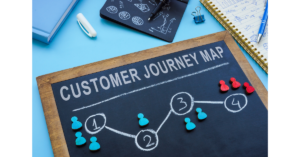Customer experience management (CXM) has become a crucial aspect of success. It’s not just about providing good customer service; it’s about creating a holistic experience that leaves a lasting impression on your customers. In this comprehensive blog, we will dive deep into the world of CXM and explore its various dimensions. Additionally, we will explore how CXM software can improve your business strategy and help you understand your customers’ wants and needs.
Understanding the Concept of Customer Experience Management CEM
Customer experience management involves designing and managing customer interactions to ensure positive and memorable experiences. It focuses on understanding customer needs, preferences, and expectations for personalized and exceptional experiences. CEM includes mapping and analyzing customer journeys to identify pain points and areas of improvement. Effective strategies involve collecting and analyzing customer feedback for data-driven decisions. CEM is vital for building customer loyalty, increasing satisfaction, and driving business growth. In this method, the companies can enhance customer engagement, improve customer touchpoints, and boost profitability.
The impact of good and bad customer experiences
Good customer experiences have a significant impact on businesses. They lead to increased customer loyalty and positive word-of-mouth, which can drive sales and revenue growth. On the other hand, bad customer experiences can result in customer churn and negative online reviews, damaging a company’s offline and online reputation. It is essential for businesses to focus on customer experience to differentiate themselves from competitors. To avoid negative instances, CEM involves analyzing customer journeys, collecting feedback, and making data-driven decisions to continually improve the customer experience.

CRM vs CXM: A Comparison
CRM and CXM have distinct focuses and approaches. While customer relationship management or CRM centres around managing customer data and interactions, CXM emphasizes creating positive customer experiences. CRM is transactional, focusing on sales, marketing, and customer service. CXM is relationship-based, aiming to build long-term customer loyalty. Success in CRM is measured through metrics like sales revenue and customer satisfaction scores. CXM evaluates success based on metrics such as customer loyalty and advocacy. CRM relies on technology-driven tools like a customer journey map, while CXM is people-driven, prioritizing personalized and memorable experiences. Both play crucial roles in driving business growth and customer satisfaction with different approaches and goals.
Identifying the right approach for your business
The right approach for your business depends on your goals and priorities. If you’re a data-driven company, CRM can be valuable in analyzing customer data and improving efficiency. On the other hand, if building brand loyalty and customer advocacy is your priority, CXM is crucial. You can also combine elements of both CRM and CXM to create a comprehensive customer management strategy.
Building an Effective Customer Experience Journey
Building an effective customer experience journey involves several key steps. First, it’s crucial to understand your buyers and patrons by conducting research and gaining insights into their needs, preferences, and pain points. Next, map out the entire customer journey, identifying all touchpoints and interactions with your brand. Personalize the experience using customer data to tailor it to individual customers. Provide excellent customer service at every stage of the journey, empowering your employees to deliver exceptional service. Finally, measure and analyze the customer experience using metrics and feedback to continuously improve.

Mapping the journey: from awareness to advocacy
The customer journey mapping begins with creating awareness about your brand and what you offer. By highlighting the value and benefits of your products or services, you can move customers from awareness to consideration. During the purchasing and onboarding process, it is essential to provide a seamless and positive experience to build a level of trust. After purchase, nurturing the relationship through exceptional customer service and support is crucial. To encourage advocacy, provide opportunities for feedback throughout the entire journey. Capture both positive and negative feedback and work on the drawbacks. By mapping the customer journey and focusing on each stage, you can create a strong foundation for brand advocates.
Techniques and Strategies for Effective CXM
Understanding and mapping the customer journey is a crucial technique in effective CXM. By identifying pain points and areas for improvement, businesses can tailor their strategies to meet customer needs. Collecting and analyzing customer feedback through surveys, reviews, and social media monitoring provides valuable insights into customer preferences and expectations. Personalizing the customer experience using consumer’s data and segmentation enhances satisfaction and loyalty. Training and empowering employees to deliver exceptional customer service ensures consistent and positive experiences. Continuous monitoring and measurement of customer satisfaction helps track progress and make necessary adjustments.
Tips and best practices from industry experts
Industry experts emphasize the importance of collecting and analyzing customer feedback on a continuous basis. They recommend implementing a customer-centric culture within the organization as a fundamental aspect of effective CXM. Personalization plays a crucial role in creating memorable customer experiences since satisfied customers make the best brand advocates. Leveraging technology and real time data analytics enables businesses to identify trends right as they occur. Moreover, continuous improvement and innovation are vital to staying ahead in the competitive market.
CXM Software Improves Your Business Strategy
CXM software enhances business strategy by providing insights into customer behavior, tracking interactions across channels, and identifying areas for improvement in the customer journey. If marketers are looking to boost customer loyalty and seek more happy customers, then a well-equipped tool can be your best friend.
Features to look for in a CX software
When considering a CXM software, it’s important to look for robust data analytics capabilities. These features are crucial for tracking and analyzing customer interactions and behavior. Integration with other business systems, such as CRM and marketing automation, provides a holistic view of the customer journey. Real-time feedback and survey tools enable insights and measurement of customer satisfaction. You can launch your own metrics of CSAT, NPS, CES scores on channels that bring a high response rate. Additionally, automation and workflow management functionalities streamline processes and ensure timely responses to customer inquiries.
Tools and techniques for gaining consumer insights
Surveys and questionnaires provide direct feedback from respondents but only if you bring high response rates. Opting for the right survey channels can give you the insights that you need. Messenger based applications, AMP email and chatbots can provide real-time feedback. Data analytics helps analyze buyer behavior and identify patterns and preferences. User testing allows for the gathering of feedback to enhance the CX. By utilizing these tools and techniques, businesses can gain a better understanding of their customers’ needs and preferences.

CXM can build emotional connections with customers
Businesses rely on Customer Experience Management (CXM) strategies to build better customer strategy and capture emotions. CXM focuses on creating positive and memorable experiences for customers, fostering loyalty and repeat business. By understanding the customer journey and identifying pain points, CXM enables companies to improve their products, services, and interactions. Technology is instrumental in CXM, allowing businesses to collect and analyze buyer data, enabling informed decision-making. With CXM, businesses can cultivate emotional connections that resonate with customers, strengthening relationships and driving long-term profitability.
Conclusion
In order to achieve a great customer experience, businesses have to manage customer expectations based on customer segmentation. Since each patron will come with their own needs and requirements, a well built tool can capture real time feedback for this. To understand how you can supercharge the way you collect feedback, sign up for a 14 day free demo on Merren. Take your first step with Merren and change the way you collect more feedback over traditional methods.





